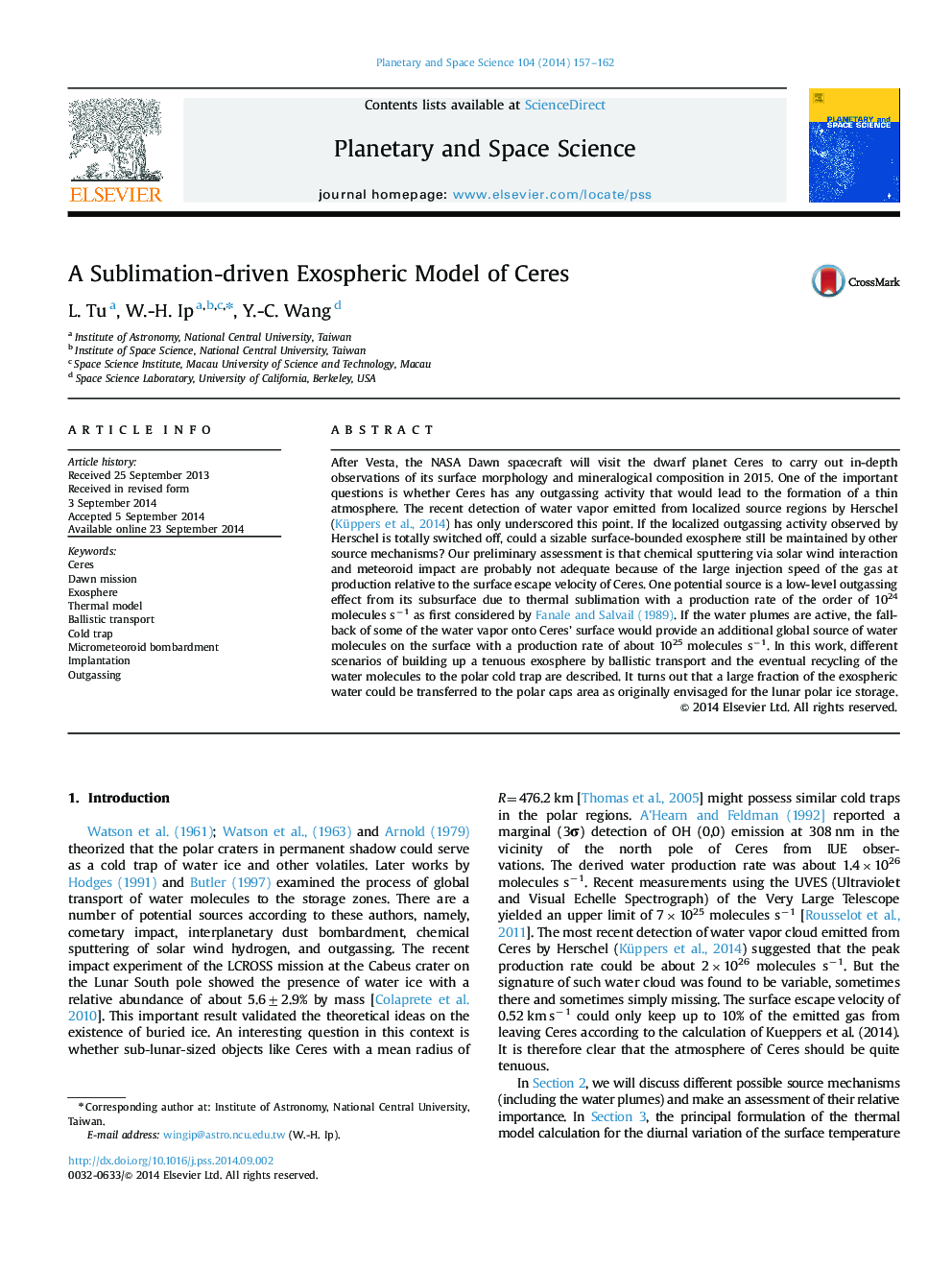| کد مقاله | کد نشریه | سال انتشار | مقاله انگلیسی | نسخه تمام متن |
|---|---|---|---|---|
| 1781012 | 1022245 | 2014 | 6 صفحه PDF | دانلود رایگان |
• Description of the global exospheric structures during Ceres׳ active outgassing condition and inactive outgassing condition, respectively.
• The ballistic transport of the emitted water molecules to the polar regions could be effective in forming ice caps on Ceres.
After Vesta, the NASA Dawn spacecraft will visit the dwarf planet Ceres to carry out in-depth observations of its surface morphology and mineralogical composition in 2015. One of the important questions is whether Ceres has any outgassing activity that would lead to the formation of a thin atmosphere. The recent detection of water vapor emitted from localized source regions by Herschel (Küppers et al., 2014) has only underscored this point. If the localized outgassing activity observed by Herschel is totally switched off, could a sizable surface-bounded exosphere still be maintained by other source mechanisms? Our preliminary assessment is that chemical sputtering via solar wind interaction and meteoroid impact are probably not adequate because of the large injection speed of the gas at production relative to the surface escape velocity of Ceres. One potential source is a low-level outgassing effect from its subsurface due to thermal sublimation with a production rate of the order of 1024 molecules s−1 as first considered by Fanale and Salvail (1989). If the water plumes are active, the fall-back of some of the water vapor onto Ceres’ surface would provide an additional global source of water molecules on the surface with a production rate of about 1025 molecules s−1. In this work, different scenarios of building up a tenuous exosphere by ballistic transport and the eventual recycling of the water molecules to the polar cold trap are described. It turns out that a large fraction of the exospheric water could be transferred to the polar caps area as originally envisaged for the lunar polar ice storage.
Journal: Planetary and Space Science - Volume 104, Part B, December 2014, Pages 157–162
